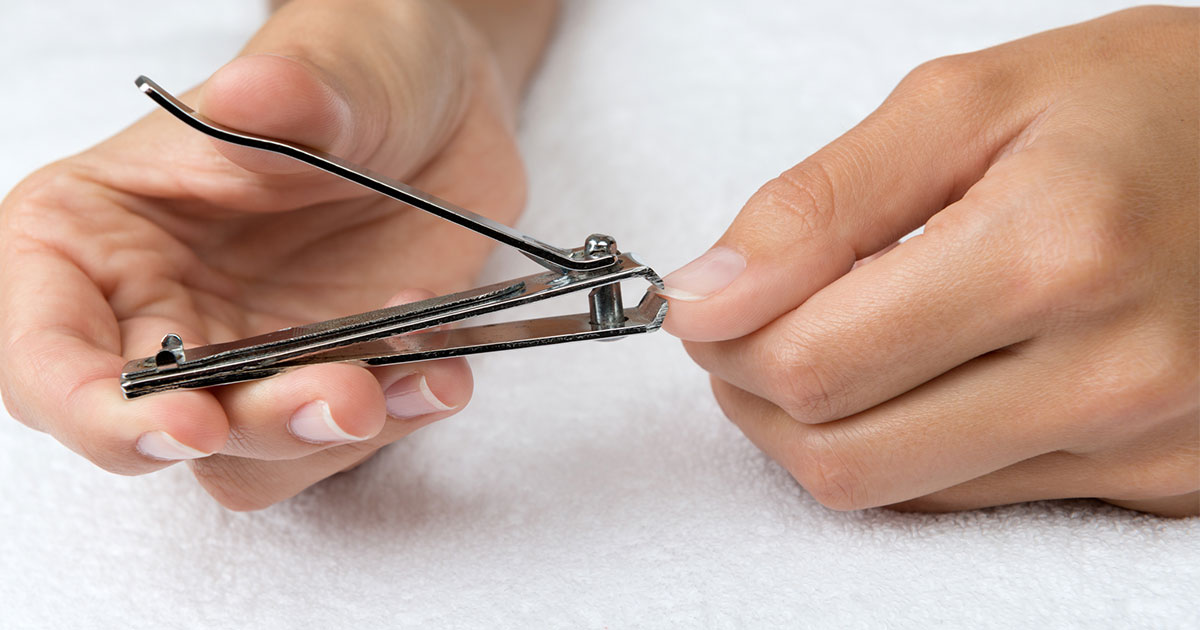
Many adults are aware of regular self-screenings recommended to detect cancer, before the onset of symptoms. For example, women should examine their breasts regularly for lumps or other changes. Men should examine their testicles. And everyone should look over their skin for changes in moles or other irregularities. Less commonly known is that our fingernails may offer a glimpse into what’s going on inside our bodies, including offering signs that may point to cancer.
Signs that may indicate health concerns include:
Soft nails that break easily may be the result of deficiencies in calcium, iron or vitamin B—concerns that may be addressed by eating more calcium-rich foods, such as milk or cheese, or by taking supplements.
Nail color may reveal some health issues as well. If the body isn’t getting enough oxygen, nails may have a bluish hue, while nails lacking color may indicate anemia or congestive heart failure and may warrant a visit to the doctor.
Nail fungi, which typically appears as discolored spots—more often on toenails than fingernails—occurs when tiny cracks in the nail or cuticle allow fungi to get in. The fungi will likely cause the nail to thicken, making it more prone to cracking or breaking. A fungal infection may be caused by a nail injury, but it also may be a sign of diabetes, according to the U.S. Centers for Disease Control and Prevention (CDC). Nerve damage, a common side effect of diabetes, may make it difficult for diabetics to feel their feet. That’s why they’re twice as likely as non-diabetics to develop a toenail fungus. Treating a nail fungus may require antifungal medication, and recovery may take up to a year.
Sign up for healthy meals and dietary supplements delivered to your door.
What is nail bed cancer?
Some fingernail or toenail changes may be a harbinger of a condition called subungual melanoma, commonly known as nail bed cancer, a rare occurrence that accounts for less than 4 percent of all malignant melanomas. Subungual means “beneath the nail.” Since there’s little public awareness about the disease or its symptoms, it often goes undiagnosed until advanced stages of the disease, says Samuel Ejadi, MD, Chief of Medical Oncology at City of Hope Phoenix.
Unlike most other melanomas, nail bed cancer does not appear to be related to sun exposure but may be caused by trauma or injury. A hallmark sign of subungual melanoma is darkening under the nail, tracking backward beyond the cuticle and into the skin around the nail. Dark, vertical streaks may also point to subungual melanoma.
“Less than 10 percent of melanomas occur on hands and feet, including the fingers,” Dr. Ejadi says. “Sometimes people see a dark color under the nail, and it may be misdiagnosed as a fungus, bleeding or some other benign issue. Another problem is that some melanomas, including under the nail, are flesh-colored and may be mistaken for a wart.”
If left untreated, subungual melanoma may be life-threatening.
Because not all primary care or family medicine doctors are familiar with subungual melanomas, Dr. Ejadi recommends seeing a dermatologist if you have a suspicious-looking nail. And don’t forget to remove nail polish to enable the doctor to get a clear view of what’s going on. Also, make sure your dermatologist examines your entire body, including the scalp, palms of the hands, soles of the feet, fingernails and toenails, and between the toes.
“Regular skin checks by a dermatologist are important, particularly if you see anything abnormal under the nail,” Dr. Ejadi says.
Cancer treatments and nail health
Certain cancer drugs may also cause nails to change color or texture. The American Cancer Society lists the following nail changes that may result from certain chemotherapy or targeted therapy drugs:
- Dark areas in the cuticle
- Darkening of the nails, known as hyperpigmentation
- Deep grooves known as fissures
- Tiny red or brown lines (called splinter hemorrhages) that grow in the same direction as the nail
- Nail loss
- Nail lifting
- Ridges, lines or creasing
Cancer patients with nail issues caused by treatments are advised to keep their nails trimmed and clean and to avoid professional manicures during treatment. Patients should also protect their hands with gloves while working in the yard or using cleaning products.



